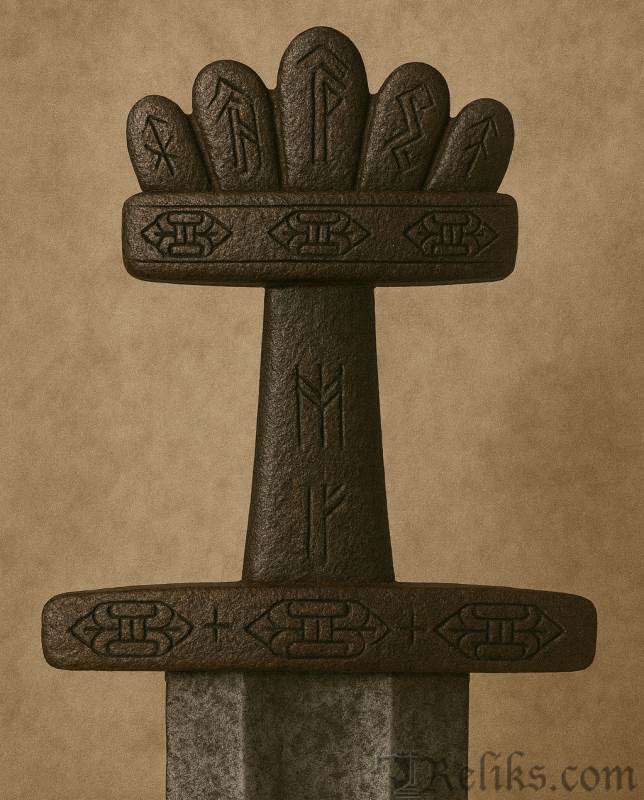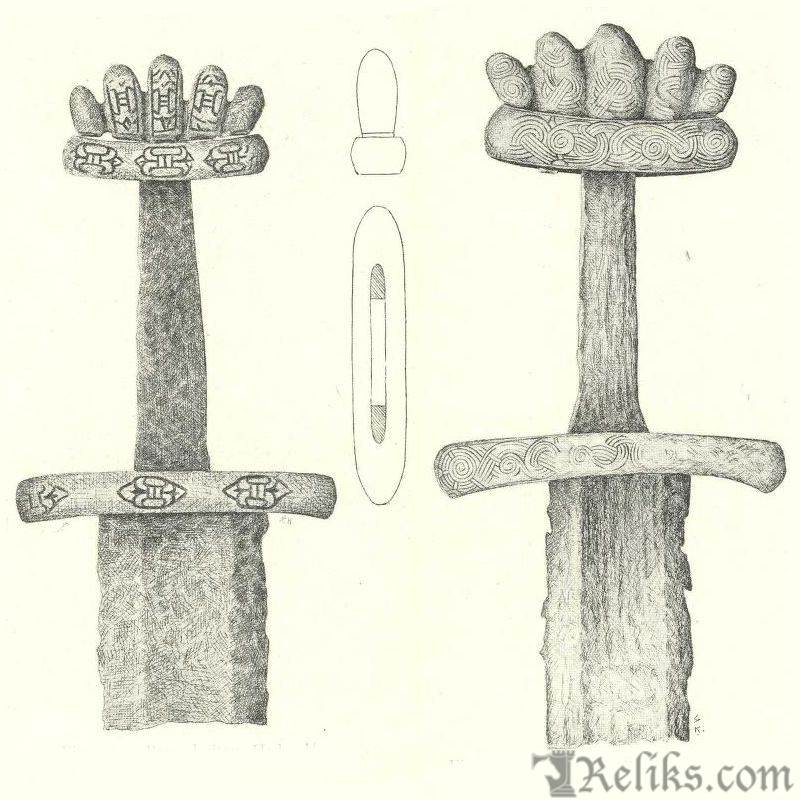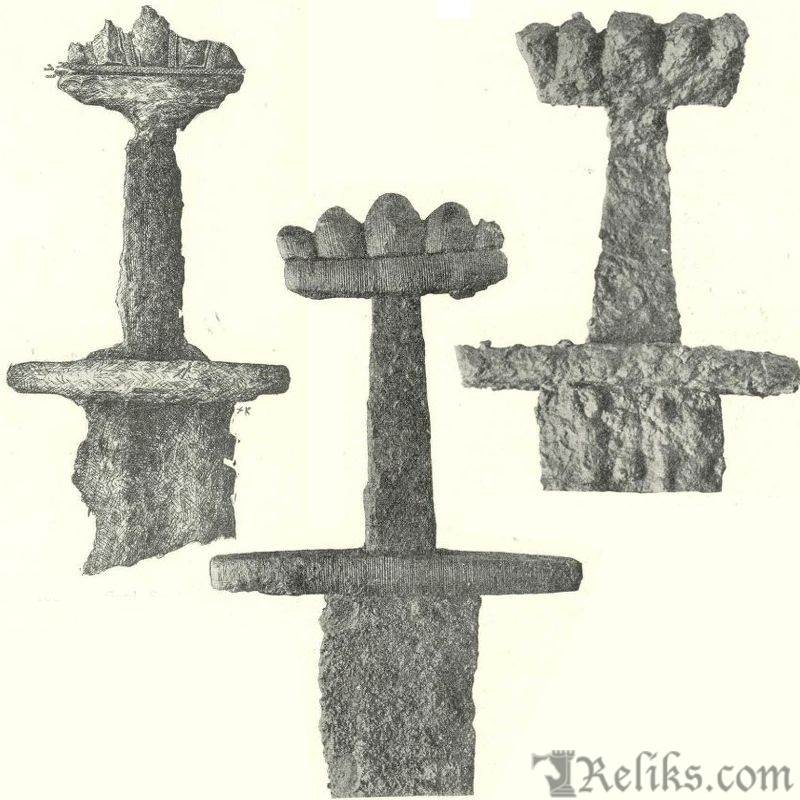Viking Sword Type O (c. 900–950)
When we enter the 10th century, Viking swords begin to take on an unmistakably new look. Among the most distinctive is Type O, recognised at once by its five-lobed pommel, each segment separated so strongly that the outer lobes seem to lean outward like wings. Where the earlier Type K had a tighter, upright formation, the O-type spreads out, announcing a new era of sword design.
Form and character

Five-Lobed Pommel Viking Sword Type O
The pommel is always divided into five parts, but unlike its predecessor, the divisions are deep and the separation unmistakable. The two outer lobes usually tilt outward, while the central one may be broader or slightly higher than the rest. The guards are often just a little curved, giving the hilt a subtle bow that differs from the straight forms of earlier types. Some examples are richly decorated, with silver or bronze plates engraved in animal or strap motifs, while others are more restrained, using only stripe inlays hammered into the iron. Twisted wires were sometimes set between the lobes, a decorative flourish also seen on K-type swords.
Blades are almost always double-edged, and a number of them carry the famous +ULFBERHT+ inscription, linking these weapons directly to the Frankish forges along the Rhine. Damascened patterns also appear, tying them to continental workshops and the international trade that flourished in the Viking Age.
Sub-groups
Petersen divided the type into three loose groups:
The first group has bronze or heavy metal fittings and often shows the clearest separation of the lobes.
The second group keeps the same five-part form but uses silver-plated iron hilts, with ornament in the animal style.
The third group is simpler, with lower pommels and straighter guards, decorated mainly with strip inlays.
Despite these differences, all three are recognisably Type O, and together they form a family that bridges the late 9th and early 10th centuries.
Distribution and finds

Petersen (fig.104-105)
Around thirty-nine Norwegian examples are known, spread across the country but with clusters in the coastal districts, particularly in Nordfjord and Sunnmøre. The inland finds are rarer, though a few occur in Hedmark and Buskerud. Associated grave goods include spears of Types C, F, and I, axeheads of Type E, and transitional rattles with round rings. These combinations help to date Type O securely to around 900 and the first half of the 10th century.
It is worth noting that two swords of this type bear the Ulfberht name, a sign not only of the prestige of their owners but also of the wide networks of exchange that linked Norway to the Rhineland.
Origins and influences
There is little doubt that Type O was born from Type K, the earlier five-lobed style, but with stronger separation and outward-flaring lobes. The resemblance is close enough that some examples blur the line between the two. Yet the presence of foreign parallels and the inscriptions on the blades make it equally clear that the design is not purely Norwegian. It represents a fusion of continental and Scandinavian traditions, carried north through trade, raids, and mercenary service.
Simplified versions also exist, where the pommel seems to merge with the upper guard into a single piece. These stripped-down swords remind us of how quickly Viking smiths could adapt, borrowing an exotic form and reshaping it into something practical and distinctly local.
In the Viking world

Petersen (fig.106-108)
For the warrior who carried a Type O sword, the weapon was more than just a tool of war. Its broad blade and outward-spread pommel would have been instantly recognisable, marking the owner as someone linked to powerful networks beyond Scandinavia. In coastal Norway, where trade routes pulsed with life, these swords were tangible symbols of the Viking Age’s international character.
Closing Reflection
The O-type sword stands at a crossroads in Viking history. It carries forward the five-lobed form of the earlier K-type but spreads its wings wider, as if to signal the dawn of a new century. Its Ulfberht blades whisper of Frankish forges, Rhine workshops, and merchants whose wares traveled as far as the fjords of Norway. Yet its adaptations—the outward lean of the lobes, the simplified local copies—show how Viking smiths could take a foreign idea and make it unmistakably their own.
To the Viking warrior, a Type O was both a deadly weapon and a badge of connection: to raiding bands, to trading voyages, and to the shifting tides of power across Europe. Today, these swords remind us that the Viking Age was never isolated; it was part of a much wider world of cultural exchange and technological innovation. In their elegant balance of imported prestige and Nordic identity, O-type swords perfectly capture the restless, outward-looking spirit of the 10th-century Viking Age.
Core classification based on Jan Petersen, De Norske Vikingesverd (1919). Additional commentary by Reliks.com.